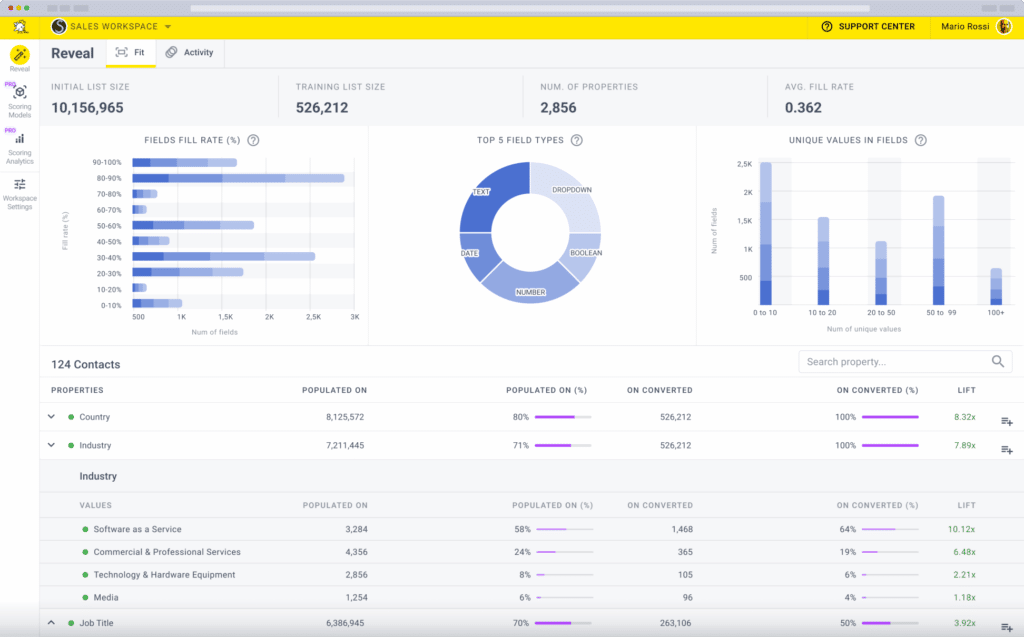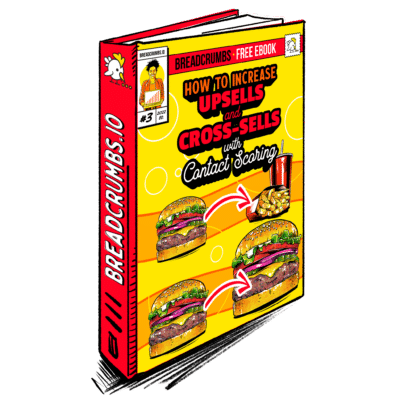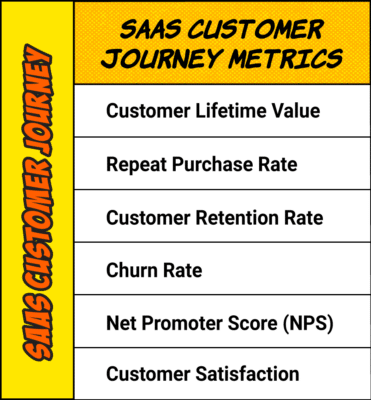According to Oracle CX Insights Report, 90% of respondents consider customer experience to be a priority for their companies. But with the evolution of technology and the enormous diversity of channels available, it became too hard to keep up with every customer. As a result, the concept of the customer journey was established.
SaaS customer journey mapping depicts all the steps prospective customers take before becoming clients. This involves identifying client pain areas, seeking solutions, comparing many competing solutions, and selecting the product—from the initial point of contact with a SaaS business through signing up for a free trial and finally becoming a paying customer.
You may categorize clients into phases to assist your team in determining the best course of action for achieving customer success and increasing desktop and mobile conversion rates.
Why Is User Journey Mapping Crucial for SaaS Businesses?
The customer journey is a complicated process starting when the consumer becomes problem-aware and later moves in a predetermined way. Throughout this process, the client faces various external elements (competitor commercials, reviews, etc.) and touchpoints with the organization (conversations with the sales department, interacting with various content, viewing products, etc.).
Your teams can comprehend, visualize, and improve each stage by mapping it. You can then reduce the issues along the path and make the journey as efficient and enjoyable for your leads and clients as possible.
Mapping generates a visual picture of the optimal customer journey that your entire business can comprehend and apply for different purposes, like:
- Planning, optimizing, and personalizing marketing activities throughout the customer lifecycle.
- Boosting customer retention and decreasing churn, prioritizing product development activities that remove friction points in the path.
- Determining the optimum times to recommend subscriptions, upsells, cross-sells, and referrals.
- Assigning employees, establishing vendor management KPIs, and other metrics to each stage of the client journey.
How to Ensure the Perfect SaaS Customer Journey?
SaaS customer journey consists of numerous stages. To ensure an excellent customer experience, analyze each of them. With the correct data on how users engage with your product, you can create software that customers will love and recommend to others. Here are the actions you should take to analyze and improve the customer journey efficiently.
1. Set Clear Goals
When you begin optimizing your SaaS customer journey, make sure you have a clear goal in mind. These will differ based on your company’s objectives and whether you sell B2B or B2C SaaS. Your goals may be the following:
- Streamlining product adoption so that consumers use all important features;
- Developing a continuous, smooth onboarding process that increases customer retention;
- Improving the consumer experience at a certain stage;
- Reducing churn rate by providing consumers with timely, pleasant self-service and customer assistance.
These objectives will likely change as your company develops and the journey evolves, so it’s essential to review them whenever you update your customer journey.
2. Establish Your Buying Personas
User personas might vary immensely in SaaS enterprises.
Be sure to conduct extensive customer journey research to establish each possible buyer profile. Remember that this approach will vary based on whether you provide a B2B or B2C service.
End-users and those with the final word on whether to invest in a B2B SaaS solution are frequently different people. It’s critical to build detailed user profiles for both groups.

Ebook
Ideal Customer Profile (ICP) Worksheet
Learn how to create an Ideal Customer Profile and build a successful sales strategy with this Ideal Customer Profile (ICP) Worksheet.
Depending on the product type, B2C SaaS client demographics may range significantly. With such a diverse user base, precisely identifying each buyer persona is critical to understanding customer needs, motivations, and buying behaviors.
But digging through large amounts of data can be tedious work. That’s why Breadcrumbs is here to help–by combing through every aspect of data and analyzing it in detail, Breadcrumbs Reveal can identify the most accurate ICPs for your business.
Reveal allows you to compare a high-value segment of your customers, such as those who retain your services the longest or spend the most money, to your entire audience.

That way, you can identify what makes them special and use that knowledge to better target and serve your customers going forward. Not only does Reveal provide valuable insight, but it also helps you fine-tune your marketing efforts in an efficient way.
Doing this will ensure you get a clearer view of the market and avoid any missed opportunities or inaccuracies that could, in turn, cost you valuable customers.
Grab your free Breadcrumbs account and start using Reveal today!
3. Identify the Stages of the Journey
Make certain you grasp the critical stages of your customer’s journey. The following are the usual steps for a SaaS customer:
- Awareness. A potential user becomes aware of their problem and begins searching for solutions. This is when people discover and start investigating your product.
- Consideration. The user begins to think about other options. They analyze their alternatives by reviewing product demos, blogs, and other resources.
- Decision. The user decides to buy your tool, either for themselves as end users or for their team, and chooses the plan that best meets their expectations and needs.
- Onboarding. It is the process through which a client begins to use your technology, learns about its capabilities, and incorporates it into their work.
- Support. When difficulties emerge, the user contacts customer service to resolve them.
- Retention. The user decides whether or not to extend their membership and whether or not to upgrade for additional services.
- Advocacy. Individuals who are still with you at this stage are more likely to believe in your product and mission, making them the perfect people to tell others about your company.

4. Determine All the Touchpoints at Each Stage
Identify the main points where people connect with your brand to build a cohesive product experience across various channels. Creating customer journey touchpoints is crucial for enhancing the customer experience when interacting with your page or product. CTAs on your landing page, a sign-up form, and the product itself are all instances of SaaS customer journey touchpoints. You should think about how else people can find you online. The possible ways might include:
- Social media platforms;
- Paid ads;
- Email marketing;
- Third-party websites.
Do a simple Google search to find out all of the pages that reference your brand. Examine your Google Analytics to determine where your traffic is coming from.
List your clients’ activities when they connect with your brand. This may be a keyword search on Google or clicking on an email link. It’s alright if you end up with an extensive list. You’ll have an opportunity to justify your information afterward.
5. Make Your Map Cyclical
The good SaaS customer experience is cyclical, so instead of concentrating on a path beginning with consumers discovering your product and ending with them making a purchase, plan out the full cycle from purchasing to repeat usage and renewal.
Take note of your customers’ post-purchase behaviors, such as continual onboarding, upgrades, etc. It will assist you in understanding how to cater to consumers after buying your product and transit them into retention or even advocacy.
6. Take the Customer Journey Yourself and Make the Necessary Changes
Studying the data might reveal to you where the customers’ demands are not addressed. By tackling this, you can guarantee that you’re giving a beneficial experience and demonstrating that individuals can discover answers to their issues with the assistance of your product. Try to follow each of your buying personas’ journeys, including their social media activities, emails, and web searches.
The data analysis should give you an idea of what your software should be like. You may then modify your website to fulfill the objectives. Creating clearer checkouts, for example, or writing more detailed product descriptions can make all the difference. Changes, no matter how large or insignificant, will be fruitful since they directly link with consumers’ pains.
7. Build a Scoring Model for Each Step of the Customer Journey
Lead scoring is a system many businesses use to assess the value of each lead that comes through their marketing efforts. Basically, it provides a way to qualify leads based on how likely they are to become customers. Lead scoring systems assign points to leads based on criteria such as demographics, firmographics, actions, and behavior.
Companies use lead scoring to prioritize their efforts and allocate resources more effectively. This helps them target high-value prospects who are most likely to convert into paying customers.
Acquisition is only one way to utilize scoring in the customer journey. You’d be leaving money on the table if you weren’t looking at expansion (through upselling and cross-selling) and retention.

Ebook
How to Increase Upsells and Cross-Sells with Lead Scoring
Learn how to increase your average order value, improve customer retention, and bolster your customer lifetime value with lead scoring.
This is where a contact scoring tool like Breadcrumbs comes in.
Use Breadcrumbs to easily set up multiple scoring models depending on where your customers are in the customer journey. Target high-value leads, measure customer engagement, intent, purchase history, and more to determine which leads are ready to buy and which customers are ready for an expansion or retention offer.

You can also use Breadcrumbs to monitor and analyze the lack of customer activity, so you can identify trends and make changes quickly before churn happens.
With Breadcrumbs, you can identify the areas of your customer journey that might be causing friction or confusion and create solutions to improve the customer experience. You can track customer behavior over time, so you understand their preferences better and use this data to make proactive decisions about how to serve them best.
Start leveraging intelligent data for free today, and grab your free Breadcrumbs account.
SaaS Customer Journey Metrics
You’ll need to rely on specific data and metrics when researching. We’ve gathered the most vital ones to keep track of.

1. Customer Lifetime Value
Customer lifetime value (CLV) refers to the total earnings a firm may anticipate making throughout a customer relationship.
2. Repeat Purchase Rate
The quantity and proportion of consumers that make extra purchases as a result of a profitable customer success project are shown by your repeat purchase rate (RPR).
3. Customer Retention Rate
The proportion of current clients you maintained in a specific time period is referred to as the customer retention rate.
4. Churn Rate
Customer churn, also known as customer turnover, is the number of clients you lose in a specific period.
5. Net Promoter Score (NPS)
The assessment is carried out by a survey in which respondents are asked how likely (out of 10) they are to suggest a business or product) to their friends. Don’t hesitate to ask the users for feedback, as 77% of consumers think more favorably about the brands asking for customer feedback.

6. Customer Satisfaction
Your customer satisfaction score may be calculated based on how consumers rate their encounters with your company. You have multiple options when it comes to the questions you ask, the grading system you utilize, and other considerations.
Wrapping up: SaaS Customer Journey
Once you’ve identified essential milestones and touchpoints, gone through the journey by yourself, and fixed the issues, the job is done, but you need to keep checking it.
Keep tracking everything regularly to see whether your customer journey is assisting you in meeting business and user objectives. To prioritize properly, use your map to assess which aspects of the journey are and aren’t functioning.
To optimize the customer experience, learn from every touchpoint, whether good or poor. Even consumers who do not convert or terminate their subscriptions might give an excellent learning opportunity.
Start by establishing your buyer personas with Breadcrumbs Reveal: you can use it for free when signing up for Breadcrumbs’s free plan! Grab your free account today, or book a demo for a personalized tour!




